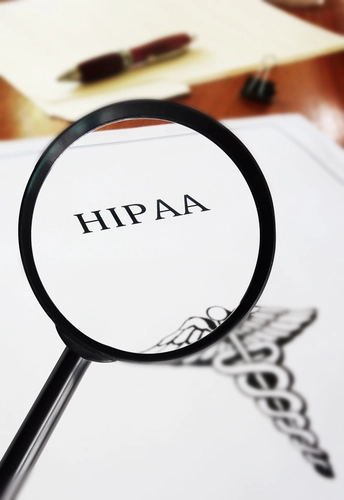Ophthalmology and Optometry Coding Alert
Bust These Myths to Collect for IOL Power Calculations
Keep bilateral rules in mind as you navigate these coding situations. Before a patient can present for cataract surgery, your eye care specialist will want to calculate their intraocular lens (IOL) power. But to make sure your practice is getting fairly reimbursed each time, you need to understand how to properly report CPT® codes 76519 and 92136. Unfortunately, many practices fall prey to some of the common myths surrounding IOL power calculations. Check out these common areas of opportunity and ensure that you’re coding properly. Bilateral Rules Are Tricky for IOLs Myth: If the physician calculates IOL power in both eyes, you should report 76519 (Ophthalmic biometry by ultrasound echography, A-scan; with intraocular lens power calculation) or 92136 (Ophthalmic biometry by partial coherence interferometry with intraocular lens power calculation) twice (e.g., 76519-RT and 76519-LT, or 76519-50). Reality: You should not report 76519 or 92136 with modifier 50 (Bilateral procedure), even if the eye care specialist calculated the IOL power of both eyes. If you look up either global code in the fee schedule, you’ll see that it says “no 150 percent payment boost” applies. But this situation goes deeper than that, because CMS divides the A-scan (76519) and the IOL Master (92136) into two components. The technical component (the actual performing of the test) is denoted with modifier TC (Technical component), and the professional component (viewing and interpreting the results) is denoted with modifier 26 (Professional component). For both 76519 and 92136, the technical component has a different bilateral status from the professional component. You can find the bilateral surgery indicators in the fee schedule. Both 76519-TC and 92136-TC are denoted with modifier indicator “2,” which means that the technical component of the codes is considered inherently bilateral. The work of performing the test on both eyes is included when reporting the CPT® codes — you should report 76519-TC or 92136-TC only once, whether the optometrist tests one or both eyes. The professional components (76519-26 and 92136-26) are denoted with modifier indicator “3,” however, which means that the professional component of the codes are inherently unilateral. Why? An eye care provider usually performs the technical component of the procedure — the actual measurement of the eye — on both eyes at the same time on the same day. But they may only perform the professional component — the IOL power calculation — on the eye that is going to have surgery. If the eye care physician calculates IOL power in both eyes, code the technical and professional components separately. For example, for an IOL Master and power calculation in both eyes, code: Alternatively, some payers require you to report these services as follows: Watch Those Modifiers Myth: Reimbursement rules are the same for the technical and professional components of the codes. Reality: Medicare rules dictate how bilateral procedures can be reimbursed. Since the global components of both 76519 and 92136 are denoted with bilateral status “2,” Medicare payment policy is to pay the fee schedule amount for only one code if you report it globally without the appropriate use of modifiers or using only modifier 50. However: For bilateral status “3,” the carrier should pay you more than it would have for the diagnostic test performed unilaterally — either the fee schedule amount or your actual fee, whichever is lower. Keep NCCI Bundles in Mind Myth: If the provider has to perform both an A-scan and IOL Master, you can report both. Reality: You may be tempted to report both, but the National Correct Coding Initiative (NCCI) indicates otherwise. CPT® codes 76519 and 92136 are in a mutually exclusive bundle. If you report both codes, Medicare carriers will only reimburse you for 92136, and no modifier can separate this edit. Example: The provider performs the technical portion of an A-scan on the left eye, but dense cataracts prevent them from getting a viable result from the right eye. They perform an IOL Master on the right eye and calculate IOL power for the right eye. You should only report 92136-TC and 92136-26-50. Do not report the failed 76519 scan and the 92136 scan together. Some payers may have alternative instructions for reporting the A-scan and/or IOL Master when the physician finds it necessary to perform both on the same day. Check with your local payer guidelines for specific guidance.

Related Articles
Ophthalmology and Optometry Coding Alert
- Diagnostic Testing:
Understand Visual Field Test Coding With 4 Quick FAQs
Hint: Always be sure to differentiate 92082 from 92083. Visual field testing (92081-92083, Visual field [...] - IOL Mythbuster:
Bust These Myths to Collect for IOL Power Calculations
Keep bilateral rules in mind as you navigate these coding situations. Before a patient can [...] - Medicare Errors:
Are Your Lab Orders Complete? This Part B Payer Is Watching
E/M coding also ranks high on the MAC’s watch list. Coding involving lab orders, E/M [...] - You Be the Coder:
Can You Code a Retinal Migraine?
Question: Notes indicate that the provider treated a patient with a “retinal migraine.” I’ve never [...] - Reader Questions:
Have Modifier 25 Rules Changed?
Question: Have the modifier 25 rules changed now that the E/M guidelines are different? My [...] - Reader Questions:
Understand the Latest on 99211
Question: What are the minimum documentation requirements needed to bill 99211? What has to happen [...] - Reader Questions:
Prep Now for New RTM Codes
Question: We read about new remote therapeutic monitoring codes coming out. Can you tell us [...]




